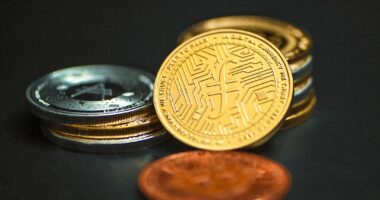Non-fungible tokens, commonly referred to as NFTs, represent a groundbreaking shift in how we perceive ownership and value in the digital realm. Unlike cryptocurrencies such as Bitcoin or Ethereum, which are fungible and can be exchanged on a one-to-one basis, NFTs are unique digital assets that cannot be replicated or exchanged on a like-for-like basis. Each NFT is embedded with distinct information that makes it one-of-a-kind, often linked to digital files such as artwork, music, videos, and even virtual real estate.
This uniqueness is what gives NFTs their value, as they can signify ownership of a specific item or piece of content in a way that was previously impossible in the digital landscape. The rise of NFTs has been fueled by advancements in blockchain technology, which provides a decentralized and secure method for verifying ownership and provenance. Each NFT is recorded on a blockchain, ensuring that its history is transparent and immutable.
This means that once an NFT is created, its ownership can be traced back to its origin, providing a level of authenticity that is crucial for collectors and creators alike. The ability to prove ownership and authenticity has opened new avenues for artists and content creators, allowing them to monetize their work in ways that were not feasible before the advent of NFTs.
Key Takeaways
- NFTs are unique digital assets that cannot be exchanged on a like-for-like basis, unlike cryptocurrencies.
- NFT services offer creators and collectors the potential for increased ownership, authenticity, and monetization of digital content.
- Navigating the NFT marketplace involves understanding the process of buying, selling, and trading NFTs, as well as the associated costs and risks.
- Blockchain technology plays a crucial role in NFT services by providing a secure and transparent platform for creating, buying, and selling digital assets.
- NFTs can be leveraged for digital art, music, and other creative works, offering new opportunities for artists to showcase and monetize their creations.
Exploring the Benefits of NFT Services for Creators and Collectors
NFT services offer a plethora of advantages for both creators and collectors, fundamentally altering the dynamics of the art and collectibles market. For creators, NFTs provide a direct channel to monetize their work without the need for intermediaries such as galleries or auction houses. This democratization of access allows artists to reach a global audience, enabling them to sell their creations directly to consumers.
Additionally, many NFT platforms allow creators to earn royalties on secondary sales, meaning they can continue to benefit financially from their work even after it has been sold.
The scarcity of NFTs—often created in limited editions—can drive demand and increase value.
Collectors can also enjoy the thrill of owning exclusive pieces from their favorite artists or brands, which can enhance their personal collections. Furthermore, the ability to showcase NFTs in virtual galleries or metaverse environments adds an interactive dimension to collecting, allowing individuals to display their assets in innovative ways that traditional art forms cannot match.
Navigating the NFT Marketplace: How to Buy, Sell, and Trade NFTs

Engaging with the NFT marketplace requires an understanding of various platforms and the processes involved in buying, selling, and trading these digital assets. Numerous marketplaces exist, each catering to different types of NFTs and audiences. Popular platforms like OpenSea, Rarible, and Foundation allow users to browse a vast array of digital art, collectibles, and other unique items.
To participate in these marketplaces, users typically need a cryptocurrency wallet compatible with the platform’s blockchain—most commonly Ethereum. The buying process usually involves browsing listings, placing bids or purchasing items at set prices, and completing transactions using cryptocurrency. Sellers can create their own listings by minting NFTs on the platform, which involves uploading their digital files and setting terms for sale.
Trading NFTs can also occur through auctions or direct sales between users. As the market evolves, new features such as fractional ownership—where multiple users can own a share of an NFT—are emerging, further diversifying how individuals can engage with these digital assets.
The Role of Blockchain Technology in NFT Services
| Metrics | Description |
|---|---|
| Transaction Speed | The time it takes for blockchain transactions to be processed. |
| Security | The level of protection against fraud and unauthorized access. |
| Interoperability | The ability of blockchain to work with other systems and technologies. |
| Decentralization | The distribution of control and decision-making across the network. |
| Smart Contracts | The use of self-executing contracts with the terms of the agreement directly written into code. |
Blockchain technology serves as the backbone of NFT services, providing the infrastructure necessary for creating, buying, selling, and trading non-fungible tokens. At its core, blockchain is a decentralized ledger that records transactions across multiple computers in a secure and transparent manner. This decentralization ensures that no single entity has control over the data, making it resistant to fraud and manipulation.
Each NFT is created through a process called minting, where the digital asset is registered on the blockchain along with its unique metadata. The use of blockchain technology not only guarantees authenticity but also enhances security for both creators and collectors. Smart contracts—self-executing contracts with the terms of the agreement directly written into code—automate various aspects of NFT transactions.
For instance, they can facilitate royalty payments to creators whenever their NFTs are resold on secondary markets. This innovation ensures that artists are compensated fairly for their work over time, fostering a more sustainable ecosystem for digital creators.
Leveraging NFTs for Digital Art, Music, and Other Creative Works
The application of NFTs extends far beyond visual art; they have become a transformative tool for various creative industries including music, gaming, and literature. In the realm of digital art, artists can tokenize their work as NFTs, allowing them to sell limited editions or even one-of-a-kind pieces directly to collectors. This shift not only empowers artists but also challenges traditional notions of art ownership and distribution.
In music, artists are exploring NFTs as a means to release exclusive tracks or albums directly to fans. By offering limited edition music NFTs that may include special perks such as backstage passes or exclusive content, musicians can create deeper connections with their audience while generating revenue without relying solely on streaming platforms. Similarly, game developers are utilizing NFTs to create unique in-game assets that players can buy, sell, or trade within gaming ecosystems.
This not only enhances player engagement but also introduces new economic models within gaming environments.
Legal and Copyright Considerations for NFT Creators and Buyers

As the NFT market continues to grow rapidly, legal and copyright considerations have become increasingly important for both creators and buyers. One of the primary concerns revolves around intellectual property rights; creators must ensure they have the legal authority to mint their work as an NFT. This often involves understanding copyright laws and ensuring that any third-party content used in their creations is properly licensed or owned outright.
For buyers, understanding what rights are transferred upon purchasing an NFT is crucial. Owning an NFT does not necessarily confer copyright ownership of the underlying asset; it typically grants ownership of the token itself while leaving copyright rights with the original creator unless explicitly stated otherwise. This distinction can lead to confusion regarding what buyers can do with their purchased NFTs—such as reproducing or commercializing them—highlighting the need for clear communication regarding rights during transactions.
The Future of NFT Services: Trends and Innovations to Watch
The future of NFT services is poised for significant evolution as technology advances and market dynamics shift. One notable trend is the increasing integration of augmented reality (AR) and virtual reality (VR) into the NFT space. As these technologies become more mainstream, we may see immersive experiences where collectors can interact with their NFTs in virtual environments or showcase them in AR settings within their physical spaces.
Additionally, sustainability concerns surrounding blockchain technology are prompting innovations aimed at reducing energy consumption associated with minting and trading NFTs. Layer 2 solutions and alternative blockchains that utilize proof-of-stake mechanisms are gaining traction as environmentally friendly options for NFT transactions. As awareness grows regarding the environmental impact of traditional blockchain networks like Ethereum, these alternatives may become more appealing to both creators and collectors who prioritize sustainability.
Tips for Maximizing the Potential of NFT Services for Artists and Investors
For artists looking to maximize their potential within the NFT space, building a strong online presence is essential. Engaging with audiences through social media platforms and participating in community discussions can help artists establish their brand and connect with potential buyers. Additionally, collaborating with other creators or participating in curated exhibitions can enhance visibility and credibility within the market.
Investors should approach the NFT market with careful consideration and research. Understanding market trends, evaluating the rarity and demand for specific NFTs, and assessing the reputation of creators are crucial steps before making purchases. Diversifying investments across different types of NFTs—such as art, music, virtual real estate, or collectibles—can mitigate risks while maximizing potential returns.
As this dynamic market continues to evolve, staying informed about emerging trends and technologies will be key to navigating opportunities effectively.
If you are interested in learning more about the world of NFT services, you may want to check out the article “Hello World: A Beginner’s Guide to NFTs” on eth-news.com.
It is a great starting point for anyone looking to dive into the world of non-fungible tokens.
FAQs
What are NFT services?
NFT services are platforms or marketplaces that facilitate the creation, buying, selling, and trading of non-fungible tokens (NFTs). These services often provide tools for minting NFTs, managing digital assets, and connecting creators with buyers.
How do NFT services work?
NFT services typically allow creators to upload their digital content, such as artwork, music, videos, or collectibles, and convert them into NFTs. These NFTs are then listed on the platform for sale or auction, and buyers can purchase them using cryptocurrency.
What can be turned into an NFT using NFT services?
Almost any digital content can be turned into an NFT using NFT services, including artwork, music, videos, virtual real estate, virtual goods in video games, and more. The key requirement is that the content is unique and can be tokenized.
What are the benefits of using NFT services?
Using NFT services allows creators to monetize their digital content, provides a new way for collectors to own and trade digital assets, and offers a transparent and secure way to prove ownership and authenticity of digital items.
Are there any risks associated with using NFT services?
Some potential risks of using NFT services include the volatility of the cryptocurrency market, potential copyright infringement issues, and the environmental impact of blockchain technology. It’s important for users to research and understand these risks before participating in the NFT market.





